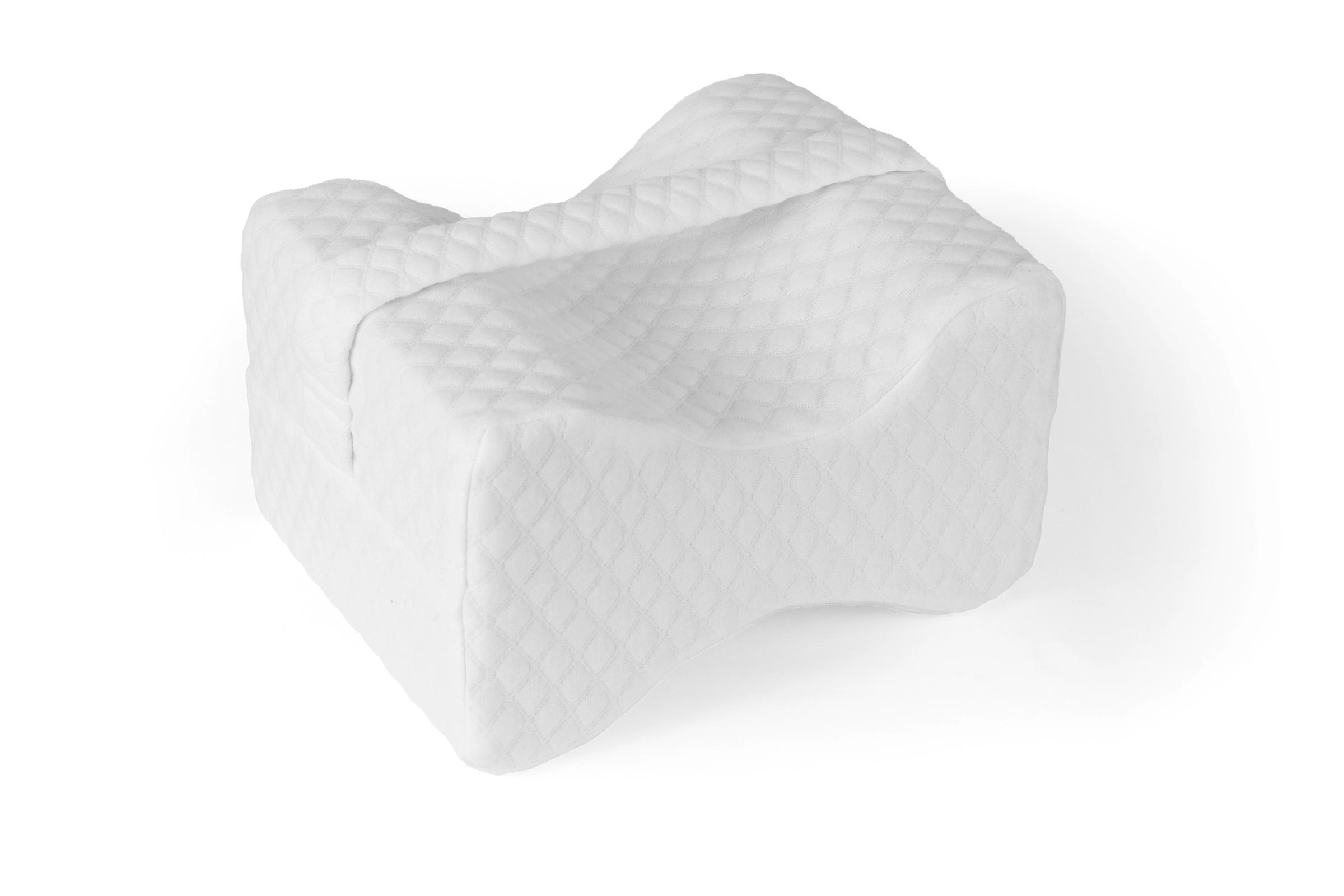How To Sleep With Hip Bursitis Pain

Hip bursitis, or trochanteric bursitis, causes inflammation of the small fluid-filled sacs that cushion the hip joint, leading to pain that often worsens at night.
These bursae sit on the outer side of the hip bone (the trochanter) and can affect anyone, though it’s most common in women aged 40 to 60.
Many people struggle to find a comfortable sleeping position with hip bursitis, but the right approach can make a big difference.
Below, we’ll explore simple ways to relieve hip bursitis pain, improve alignment, and finally get a restful night’s sleep.
The Best Sleeping Position For Hip Bursitis
Finding the right position really matters when you’re dealing with hip bursitis, and for most people, side sleeping is best.
Try lying on your pain-free side with a supportive pillow between your knees to keep your hips aligned and take pressure off the inflamed bursa.
The Groove Lower Back & Hip Pain Relief Pillow is designed for this, sitting snugly between your legs to relieve hip strain so you can finally rest properly.
Shop Now
This setup also helps ease tension through your hips and lower back, and thanks to the pillow’s secure straps, it stays perfectly in place all night.
Why Does Hip Bursitis Feel Worse At Night?
Hip bursitis pain often flares up at night because lying still puts extra pressure on the inflamed bursa.
During the day, movement spreads the load across your hip joint, but when you rest, that pressure builds in one spot.
Research also shows inflammation tends to peak during early sleep as your body releases immune-supporting molecules (Besedovsky, Lange and Born, 2011), which can make pain feel sharper overnight.
That’s why so many people with hip or shoulder bursitis wake up sore or find it hard to get comfortable.
How Long Does Hip Bursitis Last?
It really depends on how bad it is and how it’s treated. Mild cases often settle within a few weeks with rest, gentle stretching, and anti-inflammatory care.
But if it’s more severe or caused by things like muscle imbalance or repetitive strain, it can hang around for several months.
Seeing a doctor or physio can help pinpoint what’s behind it and speed up recovery.
Hip Bursitis Symptoms And Treatments
Recognising the signs of hip bursitis can help you manage pain before it worsens. Common symptoms include outer hip pain that feels sharper at night, tenderness when pressing the hip, stiffness, and discomfort when climbing stairs or standing up.
While symptoms are similar for men and women, women are more prone to developing hip bursitis.
Treatment usually starts with rest, anti-inflammatory medication, and gentle exercises to reduce pressure and strengthen surrounding muscles.
Physiotherapy can help restore mobility, and using a supportive sleeping pillow for hip pain can make a big difference in easing night-time pain and improving sleep quality.
Shop Now
How To Sleep Comfortably With Hip Bursitis
Hip bursitis often flares up at night, but a few small changes can make a big difference.
Start by sleeping on your pain-free side with a knee pillow between your legs to keep your hips aligned and reduce pressure, the Groove Knee Pillow is perfect for staying in place all night.
A medium-firm mattress also helps, supporting your hips without letting them sink too deeply.
Before bed, try gentle stretching, apply heat or cold therapy, and keep up with low-impact mobility exercises during the day.
Identifying what’s triggering your pain, like posture or repetitive strain, is key to long-term relief.
Shop NowLast Thoughts
Hip bursitis can turn sleep from dreamy to nightmarish in little time. If you struggle to sleep due to hip discomfort, at-home treatment and a high-quality knee pillow can make a real difference.
Aim to keep your hips aligned and reduce pressure on the inflamed bursa, and you’ll feel refreshed and pain-free in no time
Learn more about Groove’s knee pillow today and discover how it can help your hip pain
References
- Besedovsky, L., Lange, T. and Born, J. (2011). Sleep and immune function. Pflügers Archiv - European Journal of Physiology, [online] 463(1), pp.121–137. doi:https://doi.org/10.1007/s00424-011-1044-0.
- Harvard Health. (2025). Cold versus heat for pain relief: How to use them safely and effectively - Harvard Health. [online] Available at: https://www.health.harvard.edu/pain/cold-versus-heat-for-pain-relief-how-to-use-them-safely-and-effectively.
- NHS inform. (2024). Greater trochanteric pain syndrome. [online] Available at: https://www.nhsinform.scot/illnesses-and-conditions/muscle-bone-and-joints/leg-and-foot-problems-and-conditions/greater-trochanteric-pain-syndrome/.

